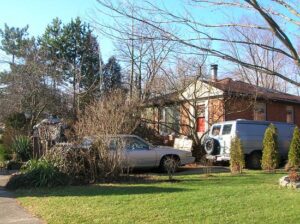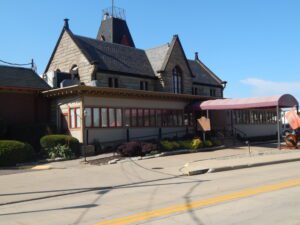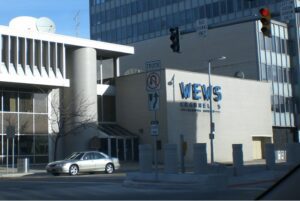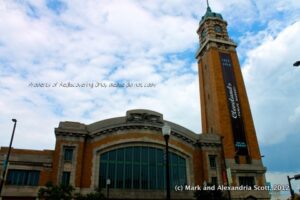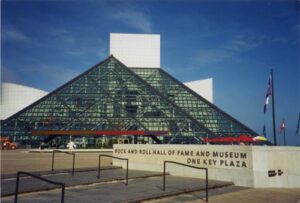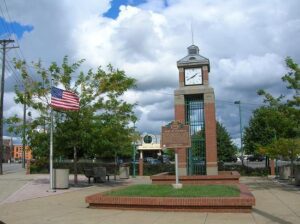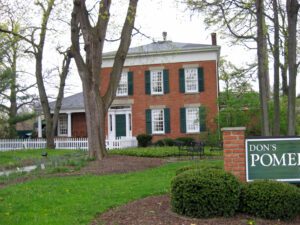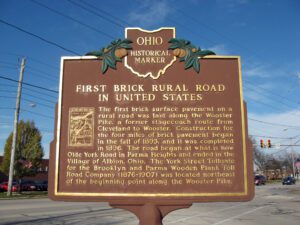, OH
The ARK in Berea is the first structure in Cuyahoga County to incorporate sustainable building concepts from the Earth Summit in Rio de Janeiro in 1992. Hand built in 1994 as a work of art by environmental artists David and Renate Jakupca, it is a study for future buildings for the Headquarters of the International Center for Environmental Arts (ICEA) and Eco Village. A hybrid structure utilizing cob, straw bales, aluminum cans, used tires, and recycled construction materials, the ARK (Architektur Recycled Kulturstall) helps to address the environmental problems of large urban areas and the trend of rebuilding rather than remodeling existing structures. The ARK is used as a museum, community center, and art studio of David Jakupca.
, OH
The Berea Union Depot, a significant hub in the railroad networks of northeast Ohio from the time of its construction in 1876 until its closing in 1958, is an unusual, but well-designed example of Victorian Gothic Architecture. With the development of an expanding stone quarry industry in the area, Berea and its railroad facilities grew rapidly and by the early 1870s developers and townspeople alike called for construction of a new passenger and freight station. When this Berea sandstone station was completed and then dedicated on May 3, 1876, the Cleveland Plain Dealer called the building “the finest facility outside the big cities.” From 1958 until 1980, the building remained closed until it began a second life, restored as a restaurant and gathering place.
, OH
One of America’s most admired women, pioneer television newscaster Dorothy Snell Fuldheim (1893-1989) began her career as a lecturer in the 1920s and entered broadcasting with a biographical series on WTAM radio in Cleveland. In 1947, Fuldheim joined Ohio’s first commercial television station, WEWS, becoming the first woman in the United States to anchor a news show. Her later work included the long-running “One O’clock Club” live interview show and regular news commentary. During her six-decade career in an often youth-dominated profession, Fuldheim conducted over 15,000 interviews-including Adolf Hitler, Benito Mussolini, the Duke of Windsor, Albert Einstein, and Helen Keller-in a unique and erudite style. She retired in 1984 at the age of 91.
, OH
Since opening in 1912, the West Side Market, Cleveland’s oldest continuously operating, municipally-owned market, has been an anchor to the historic Ohio City neighborhood. Built to replace the Pearl Street Market and the Central Market. All three served Cleveland’s growing population in the early 20th century, but only the West Side Market remains. Designed by architects W. Dominick Benes and Benjamin Hubbell, the 30,000 square foot space has a dramatic vaulted Guastavino tile ceiling and a signature clock tower that is 137 feet high. The Seth Thomas clock Company manufactured the clock. (Continued on other side)
, OH
When radio station WJW disc jockey Alan Freed (1921-1965) used the term “rock and roll” to describe the uptempo black rhythm and blues records he played beginning in 1951, he named a new genre of popular music that appealed to audiences on both sides of 1950s American racial boundaries–and dominated American culture for the rest of the 20th century. The popularity of Freed’s nightly “Moon Dog House Rock and Roll Party” radio show encouraged him to organize the Moondog Coronation Ball–the first rock concert. Held at the Cleveland Arena on March 21, 1952, the oversold show was beset by a riot during the first set. Freed, a charter inductee into the Rock and Roll Hall of Fame, moved to WINS in New York City in 1954 and continued to promote rock music through radio, television, movies, and live performances.
, OH
Jerry Siegel and Joe Shuster, two Glenville High School students imbued with imagination and talent and passion for science fiction and comics, had dream become reality in 1932. They created Superman, the first of the superheroes ever to see print. The 1932 prototype was of a villainous superhero. Superman then became the hero who has been called the Action Ace, the Man of Steel, and the Man of Tomorrow. (continued on other side)
, OH
The Pomeroy House, built from 1847 to 1848, was the home of Alanson Pomeroy and his wife, Kezia. They continued the tradition, known as “Pomeroy Hospitality,” that began when Alanson’s parents established a tavern in Strongsville. Prominent in the community, Alanson served as township trustee and Justice of the Peace in Strongsville Township, and was a leader in the Congregational Church. Oral tradition holds that the Pomeroy House served as a stop on the Underground Railroad. Runaway slaves were brought from Oberlin, often concealed under bales of hay in wagons, and hidden in the cellar of the house until they could be safely taken to Rocky River. From there, the fugitives boarded ships headed to Canada. The Pomeroy House, listed on the National Register of Historic Places, was restored in 1979 and opened as Don’s Pomeroy House restaurant in 1980.
, OH
In the late nineteenth century, a movement to improve inadequate plank and dirt roads was brought on by the popularity of bicycling, the introduction of the automobile, and the need to improve travel to and from rural areas. Ohio, as a leader in the manufacture of brick paving blocks, was quick to upgrade roads. Toll roads were waning in popularity and the need for free roads was recognized. An act passed in 1892 authorized Cuyahoga County to levy a road tax. With funds levied, the Commissioners selected the Wooster Pike as one of three road improvement projects.


